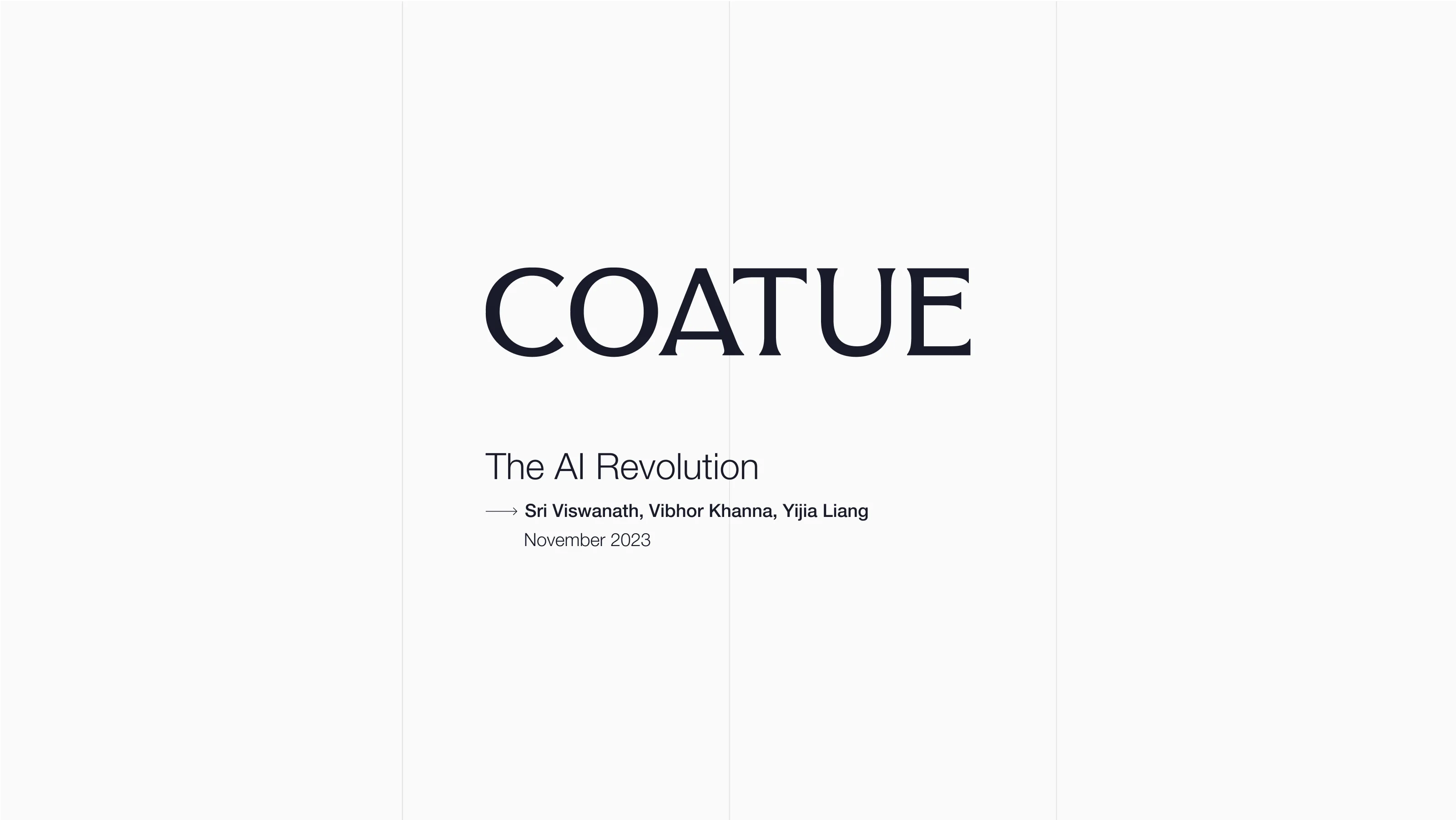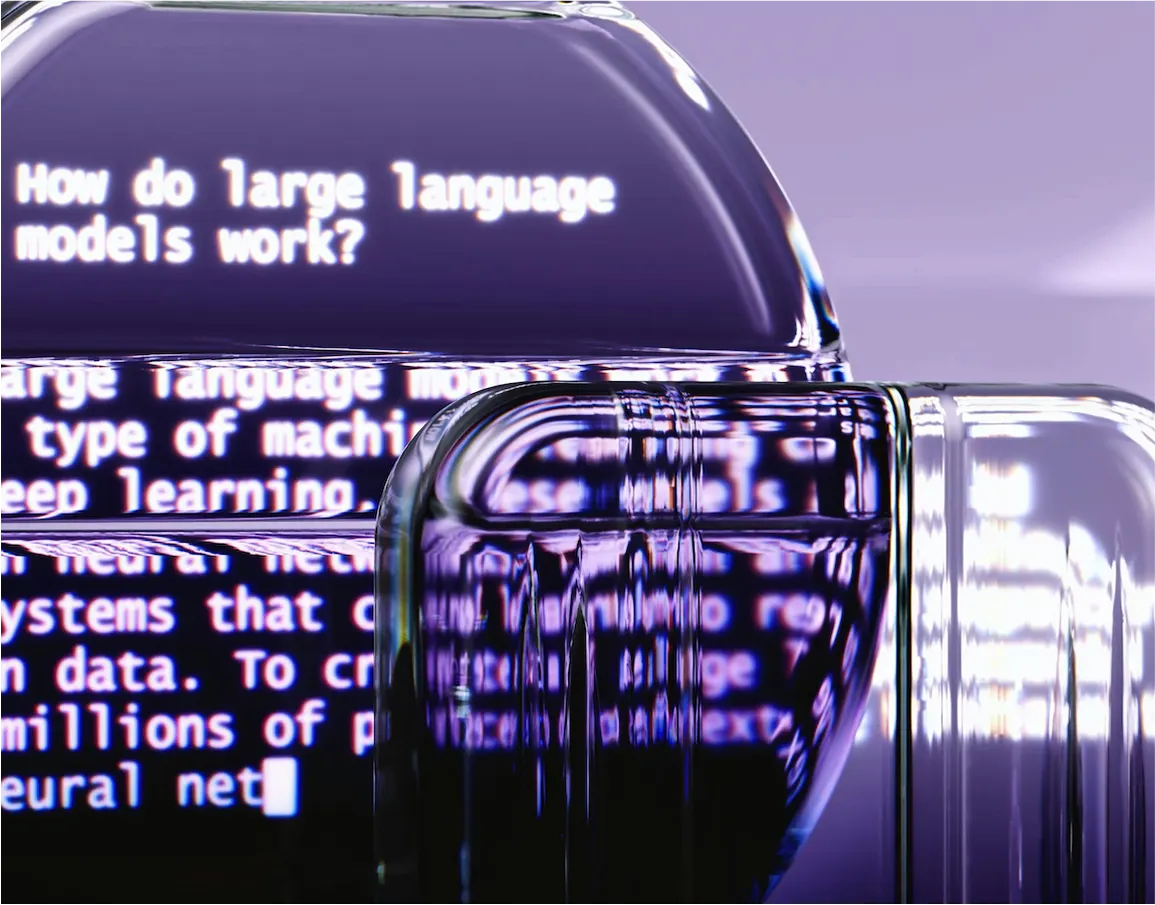
AI: The Coming Revolution

Just as the internet sparked a knowledge revolution and mobile created the on-demand economy, we believe AI is the next technology super cycle that has potential to meaningfully improve our world. Unlike anything we have seen before, AI adoption is already moving faster and beginning to transform our world, from data centers to consumer apps. Over 300K+ models have been shared on Hugging Face, 50%+ of trending GitHub repositories have been about AI, and well over 8,000 AI apps have already been created. If 2022 was the year of the AI explosion, 2023 has been the year in which the AI wave has begun to take shape and gain momentum, impacting the venture ecosystem, our modern tech stack, and the broader economy.
After more than a decade of investing in AI and backing more than 50 AI-related companies to date, Coatue has identified several key considerations informing our AI investment approach.
1. AI has potential to break through the hype and meaningfully improve our world
While widespread AI utility is nascent despite more than $20 billion invested in private AI companies, we believe it is indisputable how many opportunities there are for AI to improve our world. Our data on AI use cases shows positive signs — developers using GitHub Copilot are completing tasks 50% faster, AI has reduced the cost of customer support for one company by up to 95% (with happier users and faster response times), and in a BCG study, we’ve seen the quality of knowledge work supported by AI improve by 40%. A survey of ~600 enterprise executives and their awareness of AI capabilities further proves that the opportunity for large scale AI adoption is on the horizon, with 60% of executives confirming that they plan to adopt AI in both new and existing products. We are especially excited by the speed at which AI is improving in autonomy and utility compared to previous technology revolutions. AI is breaking through, and we believe it deserves attention and investment, and expect it to have an impact across our modern economy and daily lives.
2. Open source is the heartbeat of AI, but not all open source is created equally
Open-source research, data, and community is at the core of the AI revolution. From the original transformers paper to the latest LLAMA-2 releases, open-source development has allowed technologists to iterate, improve, and adapt AI to spur adoption and utility. As we look ahead, however, we are seeing signs that not all open source is truly open and, in some instances, is even coming under attack. Over the last 12 months, as companies have realized the value of their content, there has been a movement to restrict what research is published, to keep models closed, and even to withhold training data repositories. Despite this, we view the open-source AI community as vibrant and growing. As of November 2023, Over 200K developers are contributing to AI projects on GitHub, over 300K models have been published on Hugging Face, and there are now over 18M members of AI related Discord channels. We are committed to supporting an open ecosystem for AI, and we see open-source models as firmly having a place alongside proprietary ones.
3. Builders and investors need to understand the new, AI-centric tech stack
AI is transforming the tech stack. To add value in the new AI wave, it is critical to understand the underlying dynamics of each tech stack layer, how they interact with one another, and why they are different from prior tech stacks. While the AI model layer has gained the most attention and investment so far, we see opportunities to innovate all the way from the foundational data centers powering AI to the end user apps that could put AI in the hands of everybody.
AI Models: We think models are beginning an age of “intelligence-as-a-service”, or IQaaS, and the winners will be decided in a race for talent, data, and compute power. Scaling model performance also means scaling high quality datasets. We’re seeing models perform as well when trained on pruned and curated datasets 30% of the size, which presents an opportunity for innovative engineering teams. Synthetic data and user feedback are also potential frontiers to explore.
Compute power and cloud platforms: Hardware accelerators — predominantly GPUs (graphics processing units) – are the foundation for AI’s power. The insatiable demand for GPUs has led to ripple effects across our entire economy, from stressing our power grids, to bolstering the growth of the semiconductor supply chain, to re-accelerating demand for cloud services. As AI becomes more mainstream, we expect inference workloads to be drastically more compute intensive. Servicing 100 million GPT-4 users could cost 4x more compute per day than the amount spent on training the model. As we begin to deploy AI in production, there is an opportunity for AI startups to innovate across training and inference stacks and bring down costs dramatically.
Developer tooling: One of the big shifts since the explosion of AI in 2022, has been the democratization of AI and the rise of the AI engineer. A new crop of AI Ops tooling has emerged, which has made it dramatically easier to not only train, fine tune, and deploy models, but build on top of those models to create useful applications. Due to the emergence of a vibrant AI Ops tooling layer, the ~30M developers in the world can access AI, which creates potential for an explosion within the application layer.
AI applications: We’re seeing just the beginnings of AI applications adoption, and we predict that many more use cases will emerge. Consumer and enterprise interest in AI is already gaining momentum from creative domains with tools like Runway and Tome, to professional use cases like Replit and Aurora Solar. However, startups building AI applications will need to move quickly and create new behavioral shifts if they want to beat incumbents.
4. Coatue view: The best of AI is yet to come
In our lifetime, we expect AI to become more accessible, scalable, and useful so that anyone can leverage its power. We predict that top coding language will be natural languages (i.e. English), as AI makes it easier for more people to program, debug, and deploy software. The power of AI has the potential to move from data centers to your mobile phone, giving everyone the ability to become an AI user. Training AI with private data sets could unlock new capabilities from healthcare to retail. Finally, we expect research to continue innovating AI models, making them more intelligent and capable.
The AI Revolution is not without its challenges and shortcomings. In the near term, founders, builders, and investors will need to focus on solving AI model output hallucinations, enabling multi-modal use cases, reducing the cost of using AI, and making AI deployment easier and more secure, just to name a few of those challenges. In the longer term, we expect the development of AI to increasingly become an engineering (vs. research) challenge as we seek to scale AI across billions of users. However, we are optimistic that AI innovators will unlock a new capacity to make AI useful for us all.
We look forward to partnering with the most ambitious founders innovating in AI and accelerating humanity. Please reach out to us at ai@coatue.com if you have a big idea.